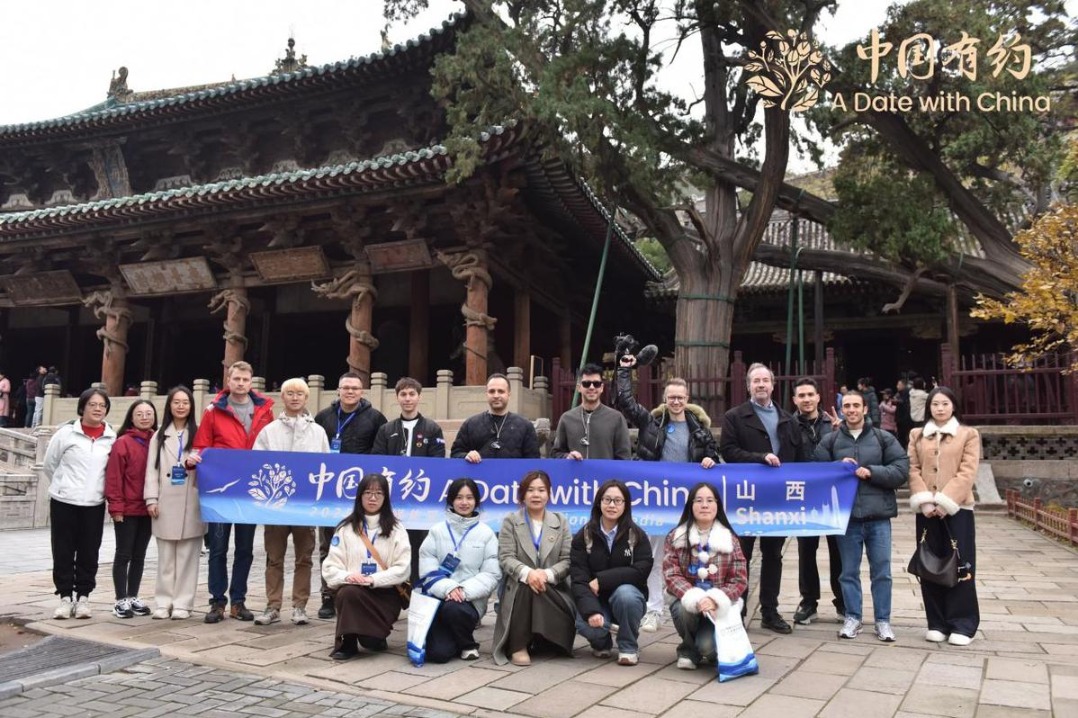Alliance of 13 institutions established in driving intelligent meteorological innovation
By Zhou Wenting | chinadaily.com.cn | Updated: 2024-06-03 20:14

Collaborating with 12 prominent institutions, the Shanghai Academy of Artificial Intelligence for Science announced the establishment of an ecological alliance dedicated to drive intelligent meteorological innovation on Monday in Shanghai.
The alliance is set to drive advancements in the meteorological industry by enhancing early warning systems, improving risk management, and bolstering disaster prevention and mitigation capabilities in response to escalating extreme weather events. Notable members of the alliance include meteorological business units, scientific research institutions, and leading industry enterprises, underscoring a united front in addressing the challenges posed by climate change.
Qi Yuan, the director of the academy—a joint venture between Fudan University, Shanghai West Bund Science and Technology Innovation Enterprise Development Co. Ltd., Lin-gang Group, and Alibaba Cloud Computing Co. Ltd.—emphasized the critical importance of mitigating damages caused by extreme weather through more accurate and timely weather forecasts.
"With the intensification of global climate change, extreme weather events are becoming increasingly frequent, triggering enormous social and economic challenges," Qi said. "It is imperative to reduce damages caused by extreme weather and improve the accuracy and timeliness of weather forecasts."
"With the meteorological large model as the core, the alliance will combine resources from all stakeholders through in-depth integration of production, education and research to jointly promote technological innovation and industrial development in the field," he said.
The academy's flagship model, Fuxi, integrates cutting-edge AI technology with climate and meteorological science. Initially unveiled at the United Nations COP28 summit in Dubai, the 1.0 version of Fuxi showcased groundbreaking capabilities in predicting extreme weather phenomena. The recent debut of the 2.0 version marks a significant milestone, with Li Hao, leading an Earth science research team at the academy, highlighting substantial improvements in forecasting accuracy for events like heavy rainfall and strong winds. He further expressed the alliance's commitment to leveraging the large meteorological model as a cornerstone to drive technological innovation and industrial progress in the field through collaborative efforts among stakeholders.
The model, named Fuxi, integrating AI technology with climate and meteorological science, was jointly developed by the academy, Fudan University, and the National Climate Center. The 1.0 version of Fuxi made its global debut at the United Nations' COP28 summit in Dubai, with the unveiling of the advanced 2.0 version taking place on Monday.
Li Hao, leading an Earth science research team at the Shanghai Academy of Artificial Intelligence for Science, highlighted significant advancements in extreme weather forecasting with Fuxi 2.0.
According to Li, Fuxi 2.0 showcases remarkable improvements in predicting extreme weather phenomena such as heavy rainfall and strong winds, surpassing the performance of existing short- and medium-term forecasting models used by the European Centre for Medium-Range Weather Forecasts (ECMWF).
























